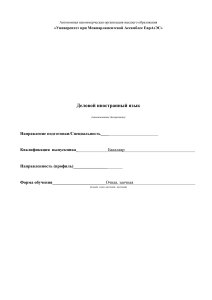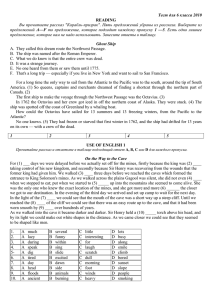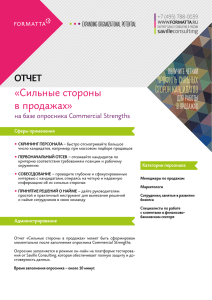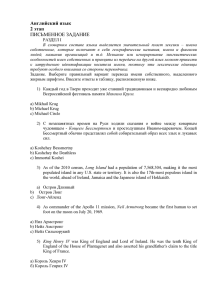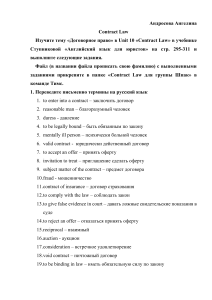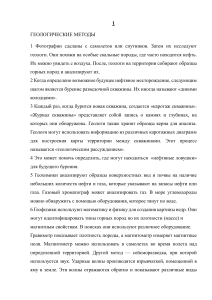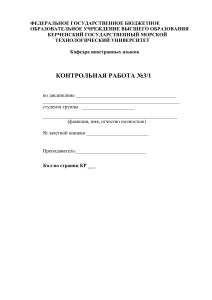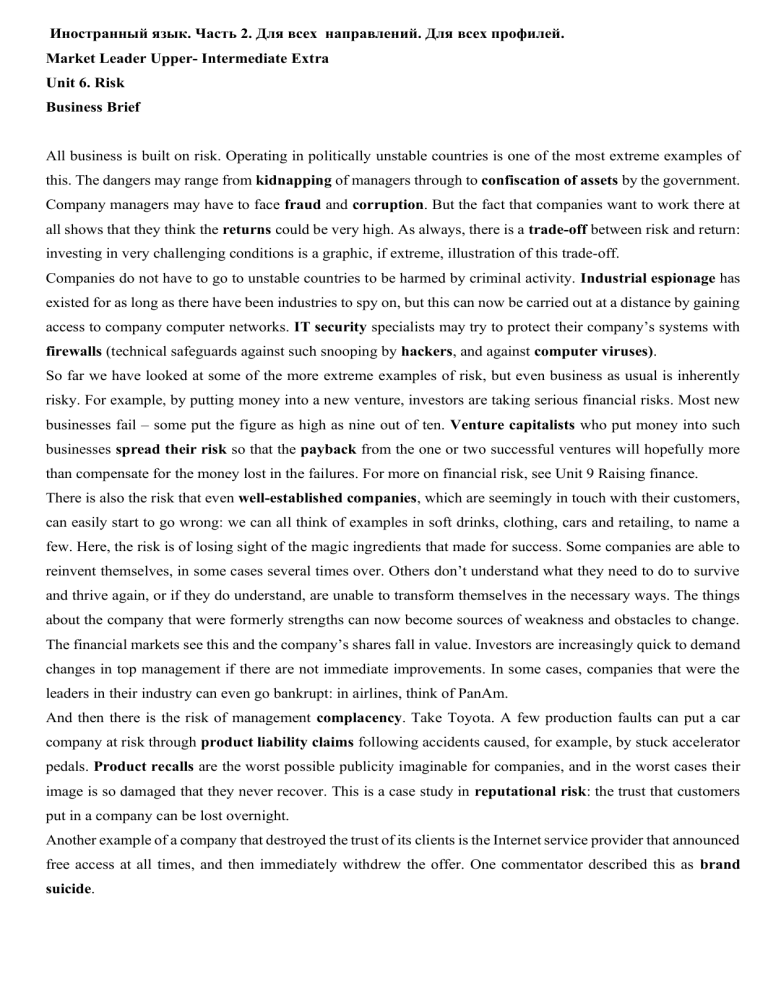
Иностранный язык. Часть 2. Для всех направлений. Для всех профилей. Market Leader Upper- Intermediate Extra Unit 6. Risk Business Brief All business is built on risk. Operating in politically unstable countries is one of the most extreme examples of this. The dangers may range from kidnapping of managers through to confiscation of assets by the government. Company managers may have to face fraud and corruption. But the fact that companies want to work there at all shows that they think the returns could be very high. As always, there is a trade-off between risk and return: investing in very challenging conditions is a graphic, if extreme, illustration of this trade-off. Companies do not have to go to unstable countries to be harmed by criminal activity. Industrial espionage has existed for as long as there have been industries to spy on, but this can now be carried out at a distance by gaining access to company computer networks. IT security specialists may try to protect their company’s systems with firewalls (technical safeguards against such snooping by hackers, and against computer viruses). So far we have looked at some of the more extreme examples of risk, but even business as usual is inherently risky. For example, by putting money into a new venture, investors are taking serious financial risks. Most new businesses fail – some put the figure as high as nine out of ten. Venture capitalists who put money into such businesses spread their risk so that the payback from the one or two successful ventures will hopefully more than compensate for the money lost in the failures. For more on financial risk, see Unit 9 Raising finance. There is also the risk that even well-established companies, which are seemingly in touch with their customers, can easily start to go wrong: we can all think of examples in soft drinks, clothing, cars and retailing, to name a few. Here, the risk is of losing sight of the magic ingredients that made for success. Some companies are able to reinvent themselves, in some cases several times over. Others don’t understand what they need to do to survive and thrive again, or if they do understand, are unable to transform themselves in the necessary ways. The things about the company that were formerly strengths can now become sources of weakness and obstacles to change. The financial markets see this and the company’s shares fall in value. Investors are increasingly quick to demand changes in top management if there are not immediate improvements. In some cases, companies that were the leaders in their industry can even go bankrupt: in airlines, think of PanAm. And then there is the risk of management complacency. Take Toyota. A few production faults can put a car company at risk through product liability claims following accidents caused, for example, by stuck accelerator pedals. Product recalls are the worst possible publicity imaginable for companies, and in the worst cases their image is so damaged that they never recover. This is a case study in reputational risk: the trust that customers put in a company can be lost overnight. Another example of a company that destroyed the trust of its clients is the Internet service provider that announced free access at all times, and then immediately withdrew the offer. One commentator described this as brand suicide.

